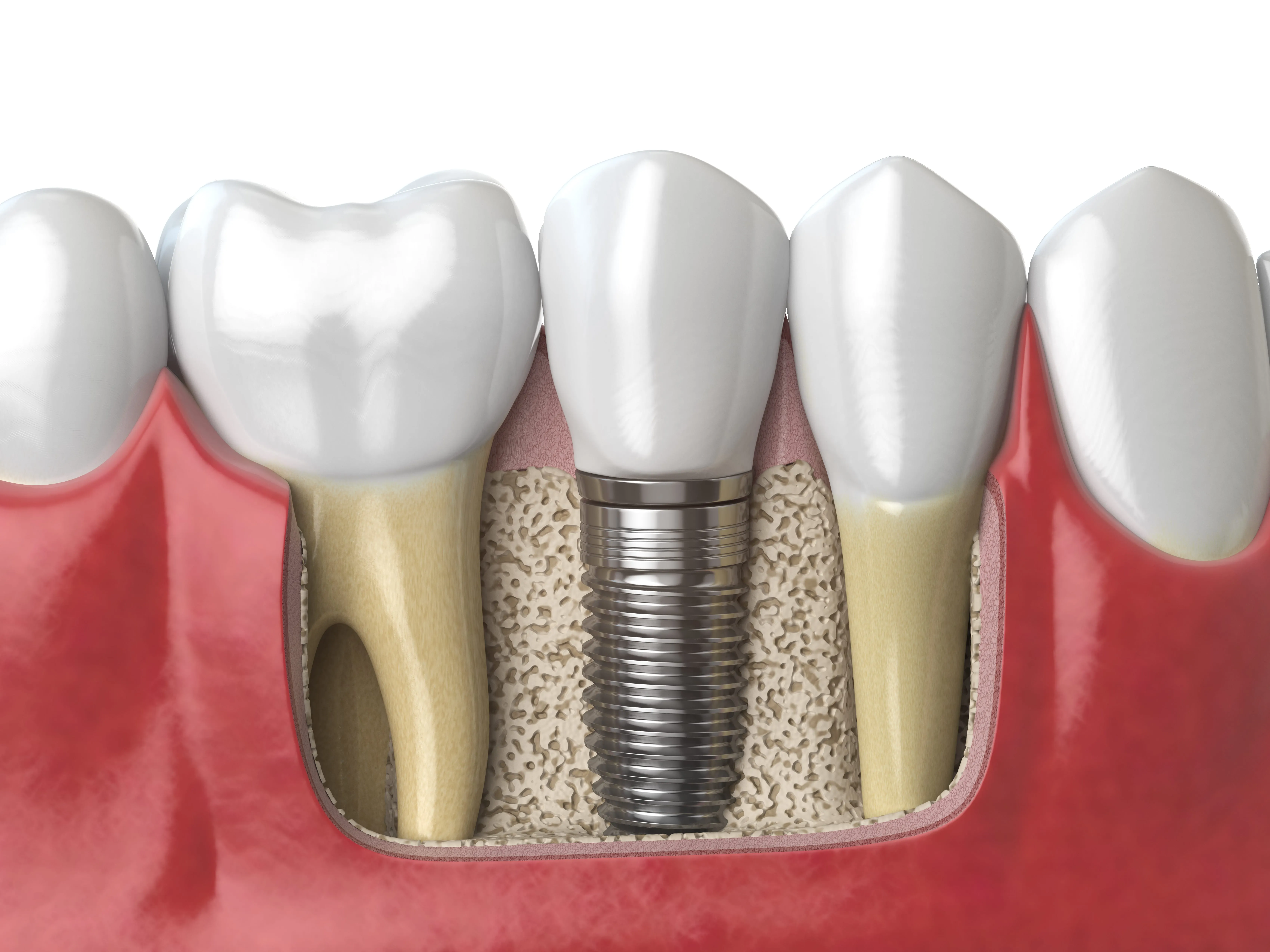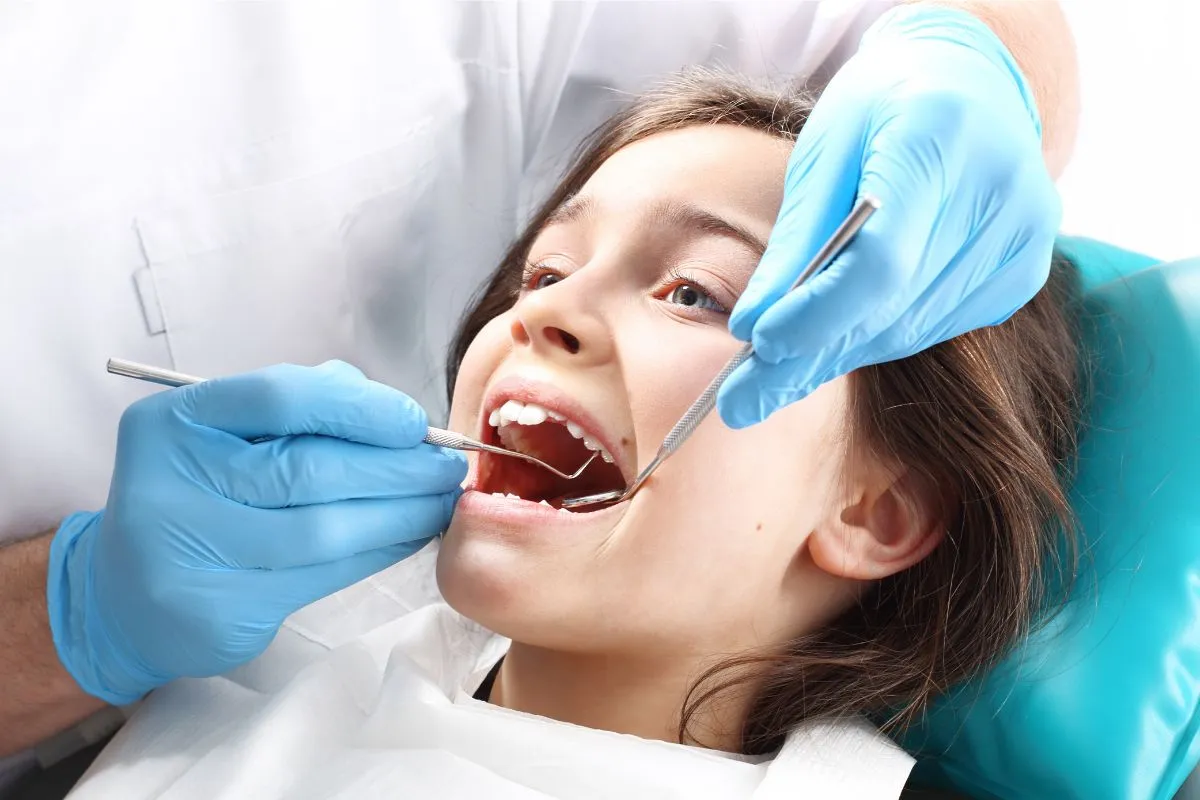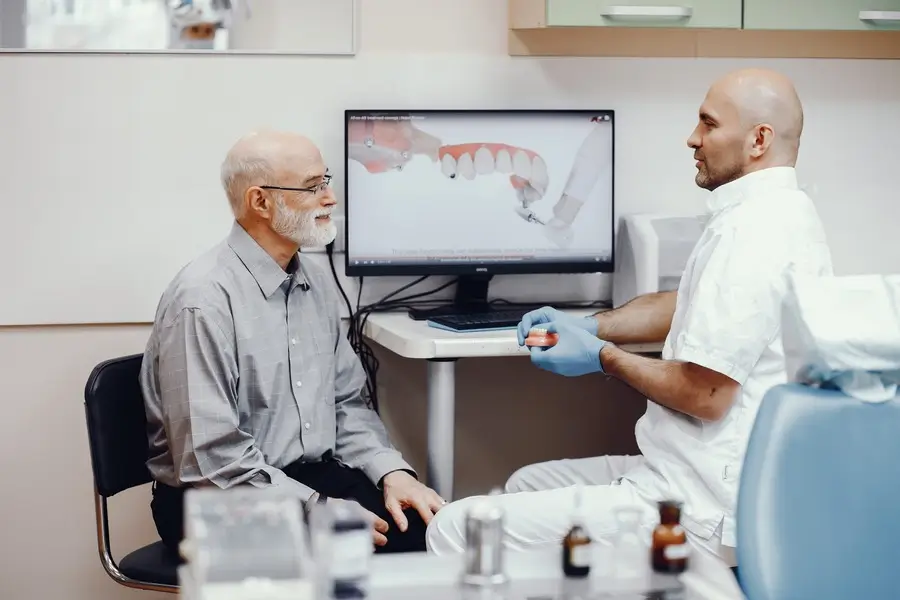Diet plays a crucial role in achieving a healthy, beautiful smile during orthodontic treatment. When you have braces, your teeth, gums, and orthodontic appliances require extra care and what you eat makes a big difference. Certain foods, especially those that are hard, sticky, or chewy, can break brackets, bend wires, or get trapped between braces, causing discomfort and even delaying your progress. Moreover, sugary foods and drinks can lead to plaque buildup, increasing the risk of cavities and staining around the brackets.
When you’re undergoing orthodontic treatment, your diet plays a bigger role than you might think. Every bite affects not just your teeth but also the delicate structure of your braces. Let’s break down why food choices matter so much during this process.
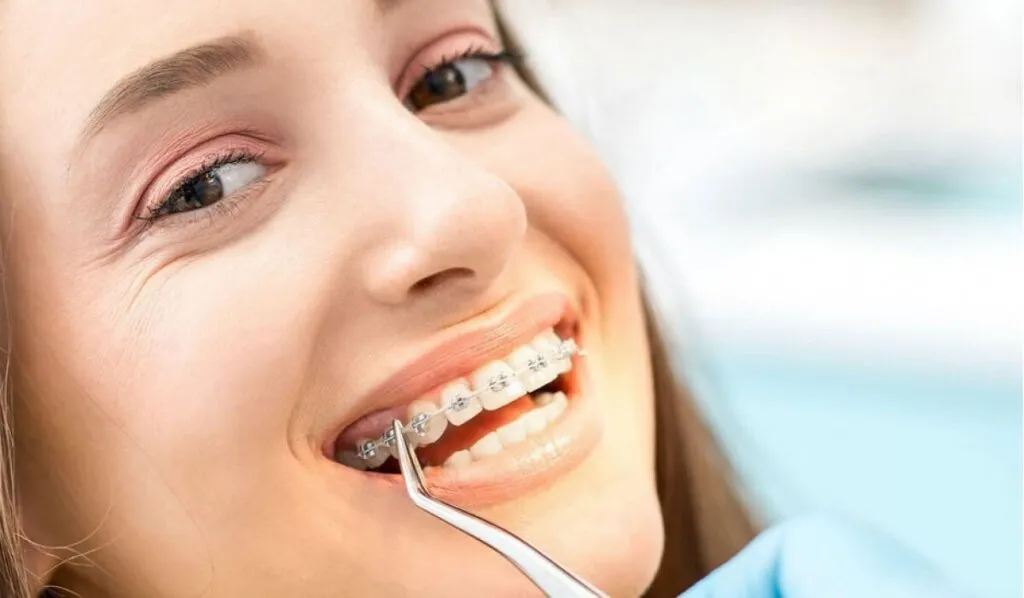
Braces are designed to gently shift your teeth into alignment using constant, controlled pressure. They consist of small brackets attached to each tooth, connected by thin wires that guide movement. Because these components are lightweight and precisely adjusted, they can easily be damaged by excessive force.
Hard foods like nuts, ice, or crunchy candies can snap brackets or bend wires, disrupting your treatment. Sticky foods such as caramel, toffee, or chewing gum can cling to the braces, pulling them loose or making cleaning difficult. This sensitivity makes it essential to choose foods that are soft, easy to chew, and less likely to cause damage.
Common Problems Caused by the Wrong Foods (Broken Brackets, Loose Wires, Stains)
When you eat foods that aren’t braces-friendly, a few issues can arise:
Broken brackets:
Hard bites can pop brackets off your teeth, requiring an emergency visit to the orthodontist.
Loose or bent wires:
Chewy or sticky foods can tug or twist wires out of place, causing discomfort and delaying progress.
Plaque buildup and stains:
Sugary foods and drinks feed bacteria, which can lead to white spots or discoloration around brackets.
Each of these problems can extend your treatment time and make the process more uncomfortable. By understanding how different foods affect your braces, you can make smarter choices that protect your smile and help you achieve faster, more effective results.
Foods to Avoid with Braces
Your braces are delicate tools working hard to align your teeth, and certain foods can interfere with that process. Some can damage brackets or wires, while others may cause plaque buildup and staining. Knowing which foods to avoid and how to modify your favorites will help you protect your braces and maintain steady progress toward a perfect smile.
1. Hard and Crunchy Foods
Examples: Nuts, popcorn, ice, hard candies, raw carrots, and whole apples.
Hard and crunchy foods can apply too much pressure on the brackets and wires, causing them to break or bend. Biting into foods like apples or carrots directly can easily snap a bracket off a tooth. Popcorn kernels and hard candies are especially risky because they can crack your braces and even chip your teeth. It’s best to choose softer alternatives or cook vegetables until tender before eating.
2. Sticky and Chewy Foods
Examples: Caramel, taffy, chewing gum, gummy candies.
Sticky foods can cling to your braces, pulling off brackets or loosening wires when you try to chew. They also trap sugar and debris around your braces, making it hard to clean effectively. Over time, this can lead to cavities, stains, or bad breath. Avoid these foods completely and opt for soft, braces-friendly treats like yogurt, pudding, or smoothies instead.
3. Sugary Foods and Drinks
Examples: Soda, candy, sweetened juices, desserts, and chocolate bars.
Excess sugar encourages plaque buildup, which can lead to tooth decay and permanent white spots once your braces are removed. Acidic beverages like soda and energy drinks can also erode enamel, weakening your teeth. Try to limit sugary snacks and drinks, and if you do indulge occasionally, rinse your mouth or brush your teeth afterward to reduce damage.
4. Tough and Chewy Meats
Examples: Steak, jerky, crusty bread, bagels, and pizza crusts.
Tough meats and dense foods can strain your braces and make chewing uncomfortable, especially right after adjustments. They can also loosen brackets or wires if you bite too forcefully. Choose softer options like shredded chicken, ground beef, or tender-cooked meats to protect your braces while still enjoying a balanced diet.
5. Foods You Need to Cut or Modify
Examples: Slice apples, cut corn off the cob, and break hard foods into small pieces.
You don’t always have to give up your favorite foods just eat them differently. Instead of biting directly into hard or crunchy items, cut them into bite-sized pieces. Cook vegetables until soft, and remove tough parts like bread crusts or corn kernels from the cob. Simple adjustments like these can make a big difference in keeping your braces safe while allowing you to enjoy a variety of foods.
Braces-Friendly Food Alternatives
While there are many foods to avoid with braces, there are just as many delicious and nutritious options you can safely enjoy. Choosing soft, easy-to-chew meals not only protects your braces but also helps reduce discomfort and ensures you get essential vitamins and minerals during your treatment.
Soft and Easy-to-Chew Options
Examples: Soups, mashed potatoes, rice, yogurt, pasta, scrambled eggs, oatmeal, steamed vegetables, and soft fruits like bananas or peaches.
These foods are gentle on your teeth and braces, making them perfect for everyday meals especially after adjustments when your mouth may feel tender. Soft foods minimize pressure on brackets and wires, preventing damage while allowing your teeth to shift properly and comfortably.
Comfort and Nutrition Benefits
Soft foods do more than just protect your orthodontic appliances they keep you comfortable and support overall dental health. They reduce chewing strain, soothe sensitive gums, and make it easier to maintain a balanced diet. Incorporating a mix of soft proteins (like fish or eggs), grains (like rice or pasta), and fruits or vegetables ensures you receive the nutrients needed for strong teeth and healthy gums.
By focusing on these braces-friendly alternatives, you can enjoy a wide variety of tasty meals without compromising your comfort or delaying your orthodontic progress.
Tips for Eating Safely with Braces
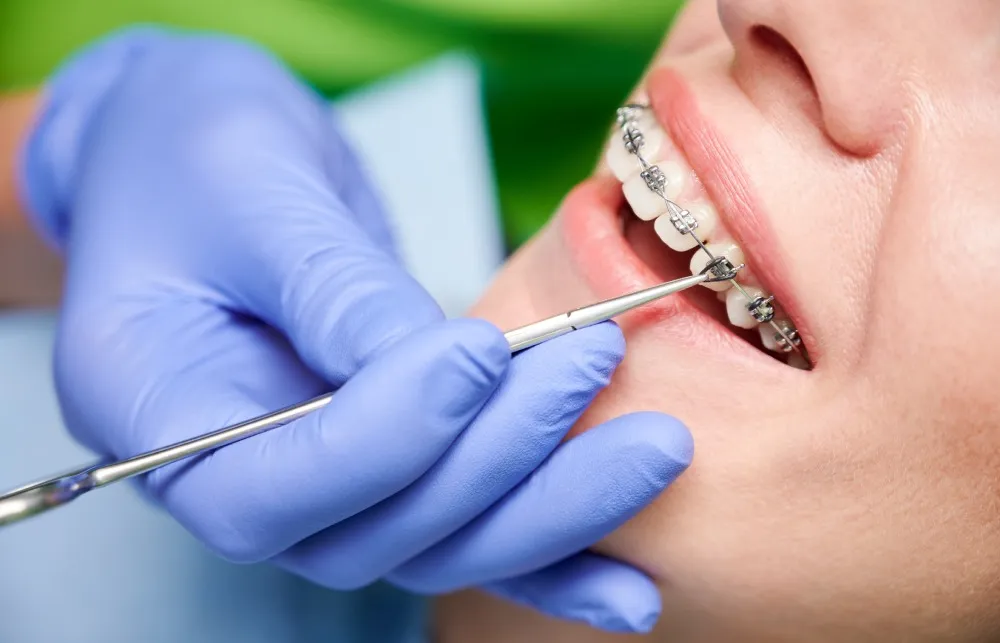
Learning how to eat properly with braces is just as important as choosing the right foods. Good eating habits can make a big difference in your comfort, oral hygiene, and overall treatment success. Careful eating helps prevent damage to your brackets and wires, reduces the risk of discomfort, and keeps your teeth healthy throughout your orthodontic journey. Below are essential, detailed tips to help you protect your braces and maintain a confident smile.
Chew Slowly and Carefully
When wearing braces, patience during meals is key. Take smaller bites and chew your food gently to avoid putting too much pressure on your brackets or wires. Rushing while eating or biting into large pieces of food can cause wires to bend or brackets to come loose which may prolong your treatment.
It’s best to cut tough foods like meat, vegetables, and fruits into bite-sized pieces. Use your back teeth for chewing since they’re stronger and less likely to cause damage to your braces. Eating slowly also allows you to enjoy your meal, aids digestion, and minimizes discomfort if your teeth are sore after adjustments.
Avoid Biting Directly into Hard Foods
Biting directly into foods such as apples, corn on the cob, carrots, or crusty bread can easily break brackets or bend wires. These foods are hard and require a strong bite something that should be avoided during orthodontic treatment.
Instead, modify how you eat them. Slice apples into thin pieces, remove corn kernels from the cob, or steam vegetables until they’re soft. If you enjoy sandwiches or pizza, opt for softer crusts or cut them into smaller pieces before eating. These small adjustments protect your braces while still letting you enjoy your favorite foods safely.
Maintain Good Oral Hygiene After Meals
Braces create more spaces for food particles and plaque to hide, making oral hygiene extra important. After every meal, brush your teeth carefully using a soft-bristled toothbrush and fluoride toothpaste. Angle your brush at 45 degrees to clean around brackets and wires effectively.
Flossing can be tricky, but tools like floss threaders, interdental brushes, or water flossers make it easier to remove food from tight spaces. Rinsing with an antibacterial mouthwash after brushing helps kill bacteria and keeps your breath fresh. Maintaining clean teeth and braces not only prevents cavities and gum problems but also ensures your smile looks great once your braces are removed.
Be Mindful of Temperature and Texture
Extreme temperatures can affect your braces. Avoid biting into very hot or icy foods right away, as sudden temperature changes may weaken adhesive or cause discomfort. Similarly, sticky or chewy foods can get trapped and are hard to clean, increasing the risk of plaque buildup. Always choose soft, mild-temperature foods when possible.
Stay Hydrated and Rinse Often
Drinking plenty of water throughout the day helps wash away food debris and acids that can harm your enamel. After snacks or meals, rinse your mouth with water if you can’t brush right away. This simple habit reduces bacteria growth and keeps your braces cleaner until your next brushing session.
Conclusion
Maintaining the right diet is a key part of ensuring your orthodontic treatment goes smoothly and delivers the best possible results. Avoiding hard, sticky, and sugary foods helps prevent broken brackets, bent wires, and dental issues that could delay your progress. By making mindful food choices and following safe eating habits, you can keep your braces in excellent condition and stay comfortable throughout your treatment.
Consistency is the secret to success eat thoughtfully, maintain good oral hygiene, and follow your orthodontist’s advice. With care and patience, you’ll not only protect your braces but also achieve a healthy, beautiful smile that lasts a lifetime.
FAQs
1. Can I eat pizza with braces?
Yes, but avoid hard crusts stick to soft slices and chew gently.
2. Are chips okay with braces?
Crunchy chips can break brackets; opt for baked or softer snacks instead.
3. Can I chew gum with braces?
No, gum can stick to wires and brackets, causing damage.
4. What fruits can I eat with braces?
Soft fruits like bananas, berries, and sliced peaches are safe.
5. How long should I avoid hard foods after getting braces?
Avoid them throughout your treatment to prevent breakage or delays.









